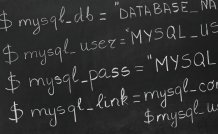Online Class: Cybersecurity 101

no certificate
with CEU Certificate*
-
15Lessons
-
31Exams &
Assignments -
2,770Students
have taken this course -
6Hours
average time -
0.6CEUs
Course Description
Cybersecurity is defined as the steps and processes taken to protect networks, devices, programs, and data from unauthorized access that can result in theft or damage. Small and large companies alike put cybersecurity measures into place to protect their network, as well as to restrict employees from visiting websites that may compromise sensitive data. It's just as important as any measures a company takes to secure their trade secrets or physical assets from being compromised.
In this course, you will receive beginner training in the field of cybersecurity. This training is ideal for those new to the field, but interested in pursuing a career. This course covers the many areas of cybersecurity that you'll need to gain employment, including network security, cloud security, system security, network infrastructure, protocols, and encryption.
You will learn various security concepts and protocols including:
- The types of hardware used in computer networks
- Basic network design
- TCP/IP, Common TCP protocols and port numbers
- Best practice for wireless networks
- Best practice for remote users
- Subnetting
- Network administration principles
- Risk mitigation strategies
- Forensic procedures
- Incident response procedures
- The types of cyber attacks and how to prevent them
- The types of wireless attacks, application attacks, and injection attacks
- About phishing and other social engineering methods
- Penetration testing and vulnerability testing
- Hardware Security
- Virtualization
- Encryption and Cryptography
- And more.
You do not need any special programs or equipment to take this course. Everything that you need to learn the material and meet the requirements are provided in the lessons. Although the goal of this course is not preparation for certification exams that might be needed to gain employment, it provides the groundwork for future studies or the potential for entry level work in smaller companies.
- Completely Online
- Self-Paced
- Printable Lessons
- Full HD Video

- 6 Months to Complete
- 24/7 Availability
- Start Anytime
- PC & Mac Compatible
- Android & iOS Friendly
- Accredited CEUs

Course Lessons
Lesson 1: Introduction to Cybersecurity
 Lesson 1 Video
Lesson 1 Video Lesson discussions: Reasons for Taking this Course
Lesson discussions: Reasons for Taking this Course Complete: Lesson 1 Assignment
Complete: Lesson 1 Assignment Assessment: Lesson 1 Quiz
Assessment: Lesson 1 Quiz
Lesson 2: Basic Network Security
 Lesson 2 Video
Lesson 2 Video Complete: Lesson 2 Assignment
Complete: Lesson 2 Assignment Assessment: Lesson 2 Quiz
Assessment: Lesson 2 Quiz
Lesson 3: The Principles of Network Administration
 Lesson 3 Video
Lesson 3 Video Complete: Lesson 3 Assignment
Complete: Lesson 3 Assignment Assessment: Lesson 3 Quiz
Assessment: Lesson 3 Quiz
Lesson 4: Understanding TCP/IP and Wireless Networks
 Lesson 4 Video
Lesson 4 Video Complete: Lesson 4 Assignment
Complete: Lesson 4 Assignment Assessment: Lesson 4 Quiz
Assessment: Lesson 4 Quiz
Lesson 5: Risk Mitigation
 Lesson 5 Video
Lesson 5 Video Complete: Lesson 5 Assignment
Complete: Lesson 5 Assignment Assessment: Lesson 5 Quiz
Assessment: Lesson 5 Quiz
Lesson 6: Security Risks Associated with Integrating Systems
 Lesson 6 Video
Lesson 6 Video Complete: Lesson 6 Assignment
Complete: Lesson 6 Assignment Assessment: Lesson 6 Quiz
Assessment: Lesson 6 Quiz
Lesson 7: Basic Incident Response and Forensics
 Lesson 7 Video
Lesson 7 Video Complete: Lesson 7 Assignment
Complete: Lesson 7 Assignment Assessment: Lesson 7 Quiz
Assessment: Lesson 7 Quiz
Lesson 8: The Importance of Security Training
 Lesson 8 Video
Lesson 8 Video Complete: Lesson 8 Assignment
Complete: Lesson 8 Assignment Assessment: Lesson 8 Quiz
Assessment: Lesson 8 Quiz
Lesson 9: Malware and Cyber Attacks
 Lesson 9 Video
Lesson 9 Video Complete: Lesson 9 Assignment
Complete: Lesson 9 Assignment Assessment: Lesson 9 Quiz
Assessment: Lesson 9 Quiz
Lesson 10: Cyber Attacks and Mitigation Techniques
 Lesson 10 Video
Lesson 10 Video Complete: Lesson 10 Assignment
Complete: Lesson 10 Assignment Assessment: Lesson 10 Quiz
Assessment: Lesson 10 Quiz
Lesson 11: Addressing Security Vulnerabilities in a Network
 Lesson 11 Video
Lesson 11 Video Complete: Lesson 11 Assignment
Complete: Lesson 11 Assignment Assessment: Lesson 11 Quiz
Assessment: Lesson 11 Quiz
Lesson 12: Network Application and Client-Side Security Techniques
 Lesson 12 Video
Lesson 12 Video Complete: Lesson 12 Assignment
Complete: Lesson 12 Assignment Assessment: Lesson 12 Quiz
Assessment: Lesson 12 Quiz
Lesson 13: Information and Data Security
 Lesson 13 Video
Lesson 13 Video Complete: Lesson 13 Assignment
Complete: Lesson 13 Assignment Assessment: Lesson 13 Quiz
Assessment: Lesson 13 Quiz
Lesson 14: Authentication and Access Services and Controls
 Lesson 14 Video
Lesson 14 Video Complete: Lesson 14 Assignment
Complete: Lesson 14 Assignment Assessment: Lesson 14 Quiz
Assessment: Lesson 14 Quiz
Lesson 15: Encryption and Cryptography
 Lesson 15 Video
Lesson 15 Video Lesson discussions: End of Course Poll; Course Comments; Program Evaluation Follow-up Survey (End of Course)
Lesson discussions: End of Course Poll; Course Comments; Program Evaluation Follow-up Survey (End of Course) Complete: Lesson 15 Assignment
Complete: Lesson 15 Assignment Assessment: Lesson 15 Quiz
Assessment: Lesson 15 Quiz Assessment: The Final Exam
Assessment: The Final Exam
Learning Outcomes
- Describe what cybersecurity means what why it is important.
- Describe basic network security.
- Summarize principles of network administration.
- Describe risk mitigation.
- Summarize security risks associated with integrating systems.
- Determine basic incident response and forensics.
- Describe the importance of security training.
- Describe malware and cyber attacks.
- Describe cyber attacks and mitigation techniques.
- Summarize addressing security vulnerabilities in a network.
- Describe authentication and access services and controls.
- Summarize encryption and cryptography techniques and best practices.
- Demonstrate mastery of lesson content at levels of 70% or higher.
Additional Course Information

- Document Your Lifelong Learning Achievements
- Earn an Official Certificate Documenting Course Hours and CEUs
- Verify Your Certificate with a Unique Serial Number Online
- View and Share Your Certificate Online or Download/Print as PDF
- Display Your Certificate on Your Resume and Promote Your Achievements Using Social Media

Choose Your Subscription Plan
No Certificate / No CEUs
This course only
| Includes certificate | X |
| Includes CEUs | X |
| Self-paced |

|
| Instructor support |

|
| Time to complete | 6 months |
| No. of courses | 1 course |
Certificate & CEUs
This course only
| Includes certificate |

|
| Includes CEUs |

|
| Self-paced |

|
| Instructor support |

|
| Time to complete | 6 months |
| No. of courses | 1 course |
Certificates & CEUs
Includes all 600+ courses
| Includes certificate |

|
| Includes CEUs |

|
| Self-paced |

|
| Instructor support |

|
| Time to complete | 12 Months |
| No. of courses | 600+ |
Certificates & CEUs
Includes all 600+ courses
| Includes certificate |

|
| Includes CEUs |

|
| Self-paced |

|
| Instructor support |

|
| Time to complete | 24 Months |
| No. of courses | 600+ |
Student Testimonials
- "This course is fantastic! I learned a lot from it, although I know about computers, I was cybersecurity illiterate before this course." -- Gamal G.
- "This course was great. I liked the vocabulary. There were terms I have heard before but never really understood and this course clarified things for me." -- Sonny T.
- "This course has enlighten me to understand how important cyber security is, and all the pro's and con's that take part in being secure. I really enjoyed this course. Thank you." -- Phyllis J.
- "I thought the course was very informative. I learned a lot. Thank you!" -- Lisa K.
- "This course was very helpful. Learned a lot of things that I did not know." -- Cristina G.
- "A very good course overall. I knew a lot before the course but definitely learned some new stuff." -- Benny M.
- "As a beginner in this domain of activity, I found this course easy to understand and very helpful." -- Gabriel C.
- "I like the course. I have a better understanding of cyber security." -- Danil L.
- "i enjoyed this class very much." -- Cristina G.
Related Courses
-
 30 hours
3.0 CEUs
Microsoft Office 2021: Word, Excel, PowerPoint and Outlook
$110.00
30 hours
3.0 CEUs
Microsoft Office 2021: Word, Excel, PowerPoint and Outlook
$110.00
-
 45 hours
4.5 CEUs
Ultimate Excel Training Bundle
$125.00
45 hours
4.5 CEUs
Ultimate Excel Training Bundle
$125.00
-
 16 hours
1.6 CEUs
Advanced Excel 2019
$95.00
16 hours
1.6 CEUs
Advanced Excel 2019
$95.00
-
 6 hours
0.6 CEUs
Cybersecurity 101
$95.00
6 hours
0.6 CEUs
Cybersecurity 101
$95.00
-
 7 hours
0.7 CEUs
Final Cut Pro X
$95.00
7 hours
0.7 CEUs
Final Cut Pro X
$95.00
-
 13 hours
1.3 CEUs
Adobe Illustrator 101
$95.00
13 hours
1.3 CEUs
Adobe Illustrator 101
$95.00
-
 6 hours
0.6 CEUs
Microsoft Publisher 2021
$95.00
6 hours
0.6 CEUs
Microsoft Publisher 2021
$95.00
-
 5 hours
0.5 CEUs
Developing Great Social Skills
$95.00
5 hours
0.5 CEUs
Developing Great Social Skills
$95.00
-
 12 hours
1.2 CEUs
Adobe Photoshop 101
$95.00
12 hours
1.2 CEUs
Adobe Photoshop 101
$95.00
-
 7 hours
0.7 CEUs
Microsoft Word 2021
$95.00
7 hours
0.7 CEUs
Microsoft Word 2021
$95.00
-
 11 hours
1.1 CEUs
Introduction to CSS
$95.00
11 hours
1.1 CEUs
Introduction to CSS
$95.00
-
 6 hours
0.6 CEUs
Google Docs
$95.00
6 hours
0.6 CEUs
Google Docs
$95.00
-
 12 hours
1.2 CEUs
Adobe After Effects
$95.00
12 hours
1.2 CEUs
Adobe After Effects
$95.00
-
 8 hours
0.8 CEUs
Adobe Lightroom 101
$95.00
8 hours
0.8 CEUs
Adobe Lightroom 101
$95.00
-
 17 hours
1.7 CEUs
Introduction to SQL
$95.00
17 hours
1.7 CEUs
Introduction to SQL
$95.00
-
 7 hours
0.7 CEUs
Google Sheets
$95.00
7 hours
0.7 CEUs
Google Sheets
$95.00
-
 8 hours
0.8 CEUs
Learn HTML - Create Webpages Using HTML5
$95.00
8 hours
0.8 CEUs
Learn HTML - Create Webpages Using HTML5
$95.00
-
 8 hours
0.8 CEUs
Quicken Tutorial: All Versions
$95.00
8 hours
0.8 CEUs
Quicken Tutorial: All Versions
$95.00
-
 9 hours
0.9 CEUs
Microsoft Project 2021
$95.00
9 hours
0.9 CEUs
Microsoft Project 2021
$95.00
-
 9 hours
0.9 CEUs
Dreamweaver 101
$95.00
9 hours
0.9 CEUs
Dreamweaver 101
$95.00
-
 8 hours
0.8 CEUs
MySQL
$95.00
8 hours
0.8 CEUs
MySQL
$95.00
-
 8 hours
0.8 CEUs
Microsoft Access 2019
$95.00
8 hours
0.8 CEUs
Microsoft Access 2019
$95.00
-
 14 hours
1.4 CEUs
QuickBooks Online
$95.00
14 hours
1.4 CEUs
QuickBooks Online
$95.00
-
 7 hours
0.7 CEUs
PowerPoint 2021
$95.00
7 hours
0.7 CEUs
PowerPoint 2021
$95.00
-
 5 hours
0.5 CEUs
Windows 10
$95.00
5 hours
0.5 CEUs
Windows 10
$95.00
-
 11 hours
1.1 CEUs
Excel 2021
$80.00
11 hours
1.1 CEUs
Excel 2021
$80.00
-
 7 hours
0.7 CEUs
Google Slides
$95.00
7 hours
0.7 CEUs
Google Slides
$95.00
-
 20 hours
2.0 CEUs
Photoshop Elements 101
$95.00
20 hours
2.0 CEUs
Photoshop Elements 101
$95.00
-
 14 hours
1.4 CEUs
QuickBooks 101
$95.00
14 hours
1.4 CEUs
QuickBooks 101
$95.00
-
 5 hours
0.5 CEUs
Outlook 2021
$95.00
5 hours
0.5 CEUs
Outlook 2021
$95.00








